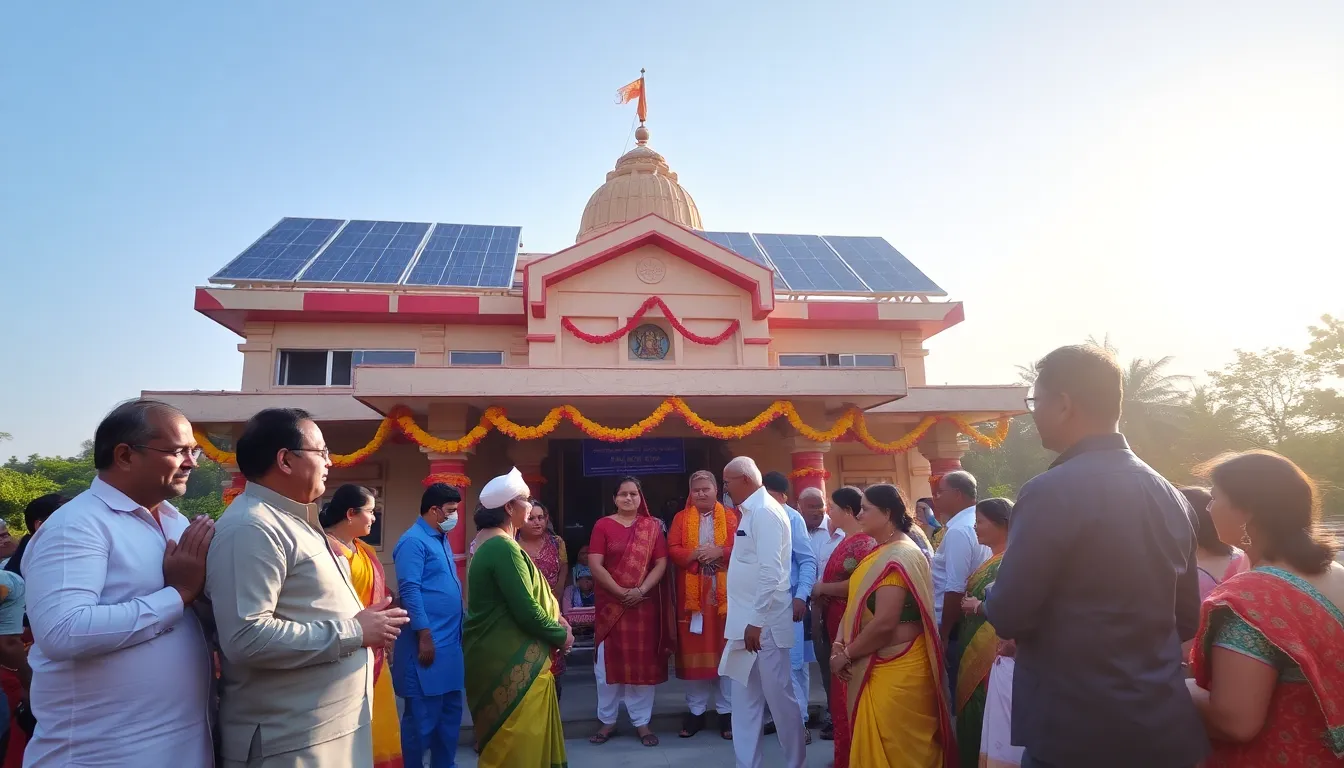Gandhinagar’s Gayatri Shakti Peeth has taken a significant step towards sustainability. The temple now uses solar energy alongside its traditional spiritual practices. Recently, a solar rooftop system was inaugurated at the temple. This event was marked by a special ceremony where local officials and community members gathered to celebrate.
The solar installation includes a 16.20 kV solar panel system. This initiative was made possible through the generous support of a voluntary donor. The aim is to promote green and clean energy in line with Prime Minister Narendra Modi’s vision for renewable energy.
The inauguration was led by Gandhinagar Municipal Commissioner J.B. Vaghela and District Development Officer B.J. Patel. They performed the ceremony with the chanting of the Gayatri Mantra, combining modern technology with ancient traditions. This blend of energy sources reflects a commitment to preserving the environment while maintaining cultural heritage.
The ceremony coincided with the Panch Kundi Gayatri Yagna, a significant event at the Shakti Peeth. During this occasion, devotees worshipped various deities installed within the temple. The gathering saw a large turnout of the Gayatri family members and local residents, showcasing the community’s support for the initiative.
The Gayatri Shakti Peeth is an important religious site in Gandhinagar, attracting many visitors. The integration of solar energy aims not only to reduce the temple’s carbon footprint but also to inspire other institutions to adopt similar practices.
This initiative is part of a larger movement across Gujarat to promote sustainable energy solutions. The state has been actively encouraging the use of solar power in various sectors, including agriculture and urban development. The government has been investing in infrastructure to support this transition, making Gujarat a leader in renewable energy in India.
The solar rooftop system at Gayatri Shakti Peeth is expected to provide clean energy for the temple’s daily operations. It will help reduce electricity costs and contribute to the temple’s overall sustainability goals. Additionally, the initiative serves as a model for other temples and organizations looking to embrace renewable energy.
As more places of worship incorporate solar energy, the message of sustainability continues to spread. This not only benefits the environment but also aligns with the spiritual teachings of many faiths, which advocate for the care of nature and the earth.
In conclusion, the Gayatri Shakti Peeth’s adoption of solar energy marks a significant milestone in Gandhinagar’s journey towards a greener future. It highlights the importance of merging spirituality with sustainability, encouraging community involvement in the process. As more institutions follow suit, Gujarat may very well lead the way in promoting renewable energy in religious and community spaces.


Leave a Reply